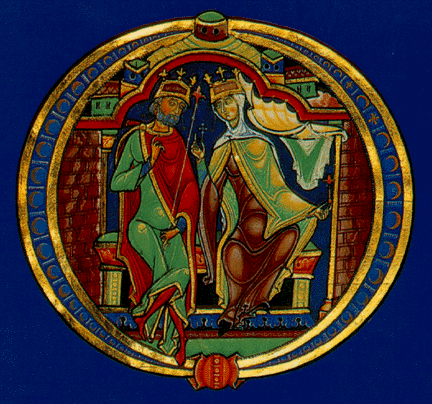
“My beloved is to me a sachet of myrrh resting between my breasts.” (Song of Solomon 1:13 ) St. Gregory of Nyssa comments on this, saying: “The Lord Himself, having become a balsam of myrrh (in His death) and taken residence in my heart itself, occupies the center of my awareness.” St. Bernard of Clairvaux also understands the bitter myrrh as an emblem not only of Christ in the Passion but as the personal repentance of each believer. “This perfume of repentance,” he preaches, “reaches to the very abodes of the blessed in heaven…. God will not scorn this crushed and broken spirit. This [myrrh] not only inspires us to amend our lives but even makes the angels dance for joy,” because the angels greatly rejoice over one sinner who repents. “Those who have renounced sinful ways are inevitably gripped by bitterness and confusion… like fresh wounds” but the bitterness of the myrrh gives way to the sweet scent of the oil of gladness described in Psalm 45:8 (which also describes the royal bride preparing to wed her groom).
In modern Judaism the Song is read on the Sabbath during the Passover, which marks the beginning of the grain harvest as well as commemorating the Exodus from Egypt. Jewish tradition reads it as an allegory of the relationship between God and Israel, while Christian tradition reads it as an allegory of Christ and his “bride”, the Church.
The Church’s interpretation of the Song as evidence of God’s love for his people, both collectively and individually, began with Origen. Over the centuries the emphases of interpretation shifted: first, reading the Song as a depiction of the love between Christ and Church; in the 11th century, it was read as describing the relationship between Christ and each Christian; in the 12th century the Bride was seen as the Virgin Mary, Each of these new readings absorbed rather than simply replaced earlier interpretations, so that the commentary became ever more complex. Reading the Song of Songs as a theological metaphor reveals the two partners–whether understood as Christ and the Church, Christ and each believer, or God and the Blessed Virgin–are eternally bound in a relationship that the idea of “marriage” can only approximate.
